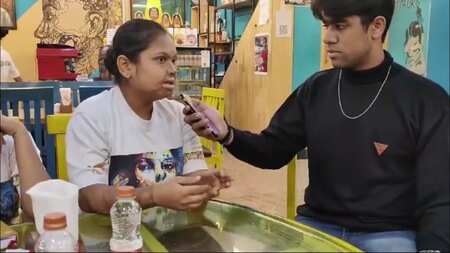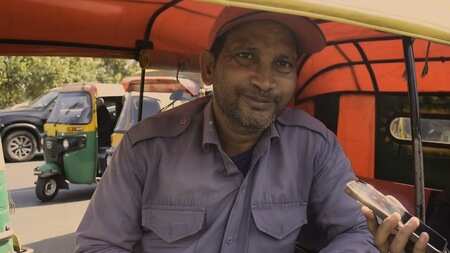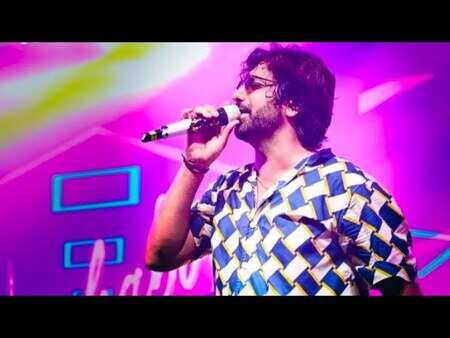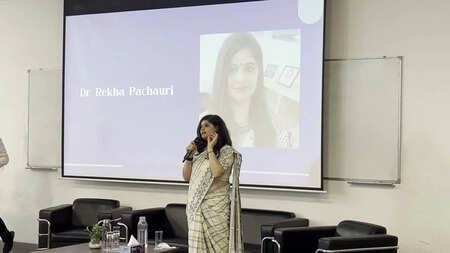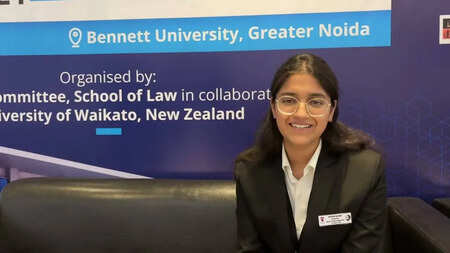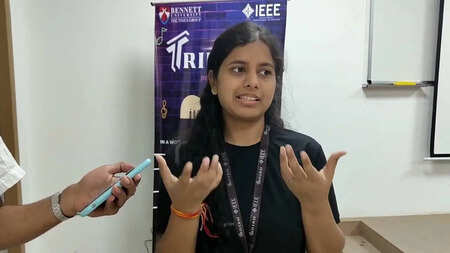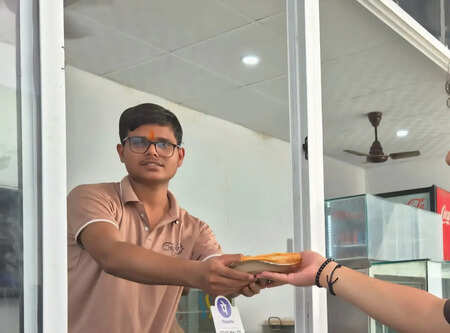History in 3D: Technology is Changing the Way We Experience the PM Museum
Times of Bennett | Updated: Sep 19, 2025 18:28
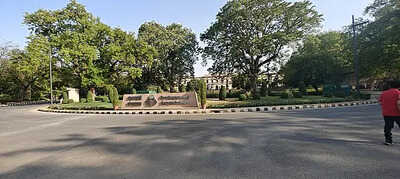
Correspondent: Himanshi Thadhani
New Delhi ! Step into the Pradhanmantri Sangrahalaya (PM Museum ) today, and it's history in more ways than dusty papers
or paintings. It is a story acted out in motion, dialogue, and light. With dubbed holograms, augmented reality (AR), interactive kiosks and other technology aids, themuseum brings back moments of Indian political history making them experiential rather than mere spectator events. A dramatic highlight: For the first time ever, tourists can converse with a life-sized 3D avatar of Sardar Vallabhbhai Patel , the ‘Iron Man of India’. Dubbed as the ‘AI powered Holobox’, the exhibit allows one to pose questions and get answers about Patel's life, his ideologies and pivotal events such as the Operation Polo, which facilitated Hyderabad's accession into the Indian Union.
This is not a mere spectacle; this is storytelling with power where the visitor becomes a participant, not a spectator. These innovations are based on a wide platform of technologies the museum has embraced. The Museum uses holograms, virtual reality (VR), augmented reality (AR), multitouch & multimedia screens, interactive kiosks and interactive screens to present exhibits in lifelike multisensory forms. Take holograms; moments in the past, speeches or infrequent interactions are brought back to life, providing a spatial and emotional presence. A speech or an appearance by a PM is no longer heard through audio alone; it is viewed in depth, so visitors feel like they occupy the space. AR provides an additional layer that tourists can stand next to; for example, Nehru or Patel take photos in an AR environment and view digital overlays of historical documents or pictures onto actual artefacts. It crosses
boundaries between the past and the present, making history personal. And then there are interactive kiosks, i.e. displays where a visitor can select what they wish to view next - archival photos, letters, video segments of speeches or even excerpts of oral history.
This application addresses two challenges: presenting history to future generations and doing so in a way that is appealing. According to its fact sheet, the museum’s intention is to honor the contribution of all the Prime Ministers and to sensitize and inspire the younger generation about the leadership, vision and achievements of all our Prime Ministers. This Technology is not decorative; it's at the heart of this endeavor. As with many contemporary museums, the PM Museum faces a dilemma - is it educating viewers about true history or is it just presenting an act? Can viewers understand the difficult choices, arguments, and mistakes or merely the
best bits through flashy visuals. Even the ‘Holobox Patel’ is questionable; who determines his answers, and what aspects of his life are featured and what aspects are omitted? But for the moment at least, the Pradhanmantri Sangrahalaya is breaking conventions about how we present history. It is shifting from static photographs, text and artefacts to dynamic dialogue, simulation and AR-facilitated narration. By doing so, it is asserting that to glance into our past, particularly our recent history is not sufficient. Occasionally, we need to step into it.
(This article is written by Himanshi Thadhani, a third-year student of BAJMC who is passionate about storytelling, and her hobby is writing)
or paintings. It is a story acted out in motion, dialogue, and light. With dubbed holograms, augmented reality (AR), interactive kiosks and other technology aids, the
This is not a mere spectacle; this is storytelling with power where the visitor becomes a participant, not a spectator. These innovations are based on a wide platform of technologies the museum has embraced. The Museum uses holograms, virtual reality (VR), augmented reality (AR), multitouch & multimedia screens, interactive kiosks and interactive screens to present exhibits in lifelike multisensory forms. Take holograms; moments in the past, speeches or infrequent interactions are brought back to life, providing a spatial and emotional presence. A speech or an appearance by a PM is no longer heard through audio alone; it is viewed in depth, so visitors feel like they occupy the space. AR provides an additional layer that tourists can stand next to; for example, Nehru or Patel take photos in an AR environment and view digital overlays of historical documents or pictures onto actual artefacts. It crosses
boundaries between the past and the present, making history personal. And then there are interactive kiosks, i.e. displays where a visitor can select what they wish to view next - archival photos, letters, video segments of speeches or even excerpts of oral history.
This application addresses two challenges: presenting history to future generations and doing so in a way that is appealing. According to its fact sheet, the museum’s intention is to honor the contribution of all the Prime Ministers and to sensitize and inspire the younger generation about the leadership, vision and achievements of all our Prime Ministers. This Technology is not decorative; it's at the heart of this endeavor. As with many contemporary museums, the PM Museum faces a dilemma - is it educating viewers about true history or is it just presenting an act? Can viewers understand the difficult choices, arguments, and mistakes or merely the
best bits through flashy visuals. Even the ‘Holobox Patel’ is questionable; who determines his answers, and what aspects of his life are featured and what aspects are omitted? But for the moment at least, the Pradhanmantri Sangrahalaya is breaking conventions about how we present history. It is shifting from static photographs, text and artefacts to dynamic dialogue, simulation and AR-facilitated narration. By doing so, it is asserting that to glance into our past, particularly our recent history is not sufficient. Occasionally, we need to step into it.
(This article is written by Himanshi Thadhani, a third-year student of BAJMC who is passionate about storytelling, and her hobby is writing)

